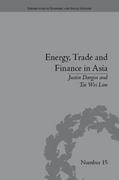Answered step by step
Verified Expert Solution
Question
1 Approved Answer
Which of the following is caused by an economy in a downturn or recession? Structural unemployment. Demand pull Inflation. Cyclical unemployment. Cost push Inflation. Frictional
- Which of the following is caused by an economy in a downturn or recession?
- Structural unemployment.
- Demand pull Inflation.
- Cyclical unemployment.
- Cost push Inflation.
- Frictional unemployment
- GDP includes:
- Spending by Australians consumers on buying imports.
- Spending by Australians consumers on buying second-hand products.
- Spending by Australians Federal Government on social welfare payments (for example aged pensions and job seeker payments).
- Spending by other countries consumers on buying Australian exports.
- Spending that creates negative externalities, the value of the social cost
- The largest share of GDP and therefore the expenditure or spending item in GDP is:
- Consumption expenditure
- Investment expenditure
- Government expenditure
- Expenditure on Exports
- Expenditure on Imports
- The following are statistics used to calculate figures about unemployment in Australia in 2021.
The working age population aged between 15-64 16,500,000
Employed persons 12,800,000
Unemployed persons 800,000
Total population 25,600,000
Using these figure's, the unemployment rate is:
- Which of the following is NOT trueor incorrect about inflation?
- Inflation is measured using a consumer price index (CPI)
- The inflation rate is measured using the formulae:
- The inflation rate is likely to fallwhen there are supply chain problems in the economy.
- The inflation rate is kept between 2-3% by the central bank using changes in interest rates to regulate demand in Australia.
- Inflation reduces the standard of living of consumers and increases their cost of living
- At full employment level of income
- The inflation rate is zero
- Structural unemployment is zero
- Frictional unemployment is zero
- Cyclical unemployment is zero
- Structural and Frictional unemployment is zero
- In 2020 the inflation rate in Australia is 5%. Which of the following is correct concerning this?
- This rate of inflation is within the Reserve Banks allowable range of inflation.
- The policy to cure this level of inflation is to increase consumers demand for products.
- One cause of this level of inflation is supply chain problems (a situation which causes the supply of products to be slowed down or held up causing supply to not meet demand)
- When inflation is high at this level unemployment is generally also high as shown on the trade cycle diagram
- Out of demand pull and cost push inflation the only cause is demand pull inflation
- In 2020 the unemployment rate in Australia is 3.5%. Which of the following is correct concerning this?
- The Central Bank (Reserve Bank in Australia) targets an unemployment rate of 0%
- This rate of unemployment is caused by reduced migration and international students coming to Australia, so jobs are filled by local workers.
- This rate is much higher than the full employment rate of unemployment.
- This rate is where supply of workers is greater than demand for workers which will put pressure on wage rates to fall.
- This rate indicates that frictional unemployment is high.
Step by Step Solution
There are 3 Steps involved in it
Step: 1

Get Instant Access to Expert-Tailored Solutions
See step-by-step solutions with expert insights and AI powered tools for academic success
Step: 2

Step: 3

Ace Your Homework with AI
Get the answers you need in no time with our AI-driven, step-by-step assistance
Get Started


